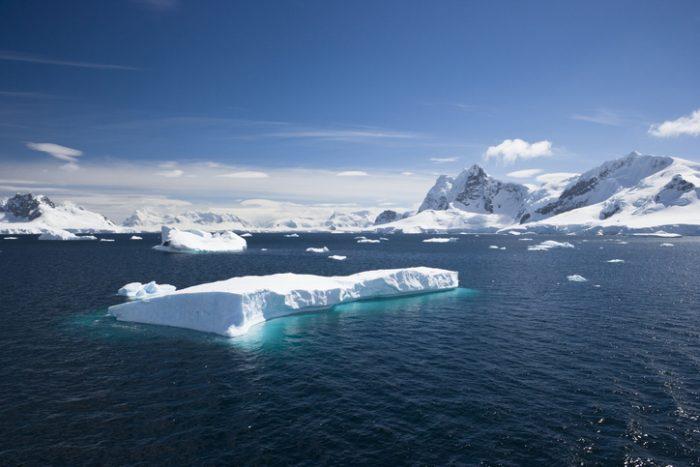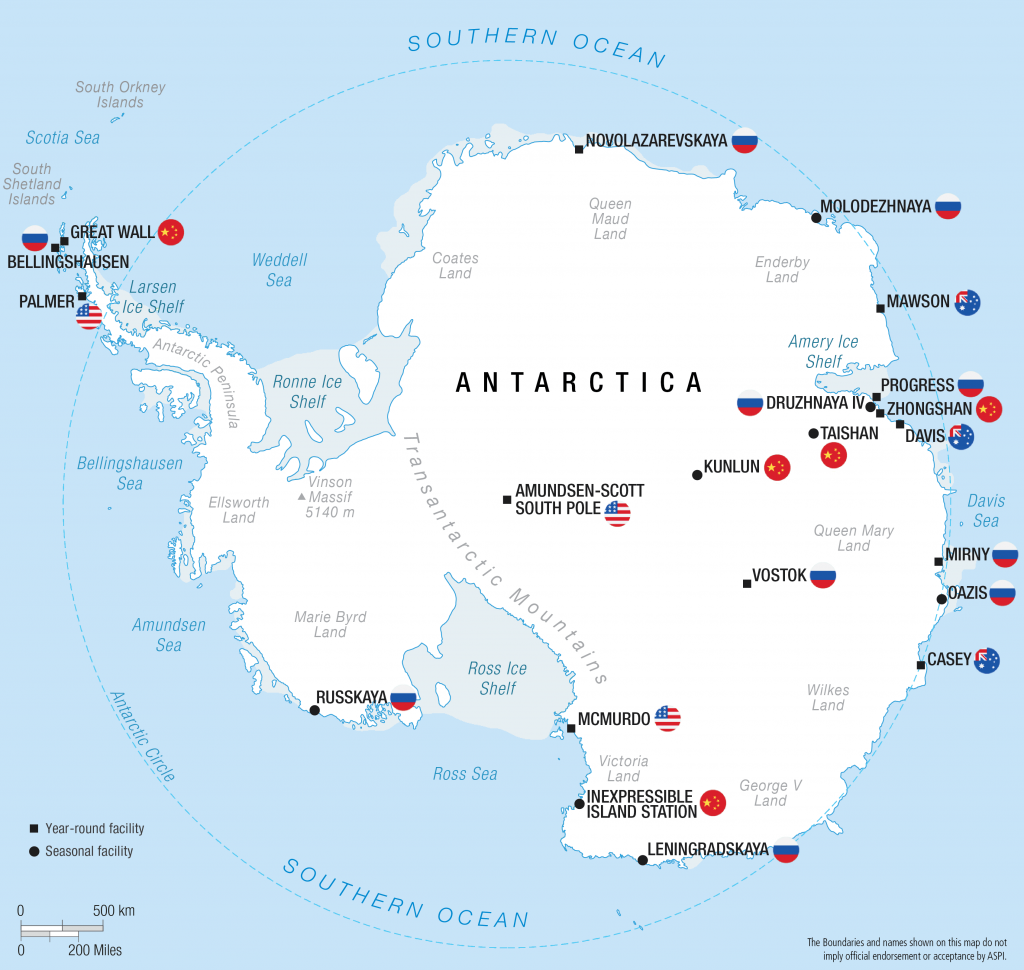
Antarctica faces a series of urgent security and environmental policy challenges requiring active engagement. At a time when Australia and the United States are deepening their strategic and geopolitical cooperation, notably through the recently announced AUKUS trilateral security partnership, these two leading and influential states in Antarctica are well situated to work together to address common concerns in Antarctica, through diplomatic channels and through the mechanisms of the Antarctic Treaty System (ATS).
The US has the largest presence of any country in Antarctica, as well as long-term interests in the region’s political stability, despite its being far from American shores. Australia maintains a claim to 42% of Antarctica and has a large Antarctic science program. Both countries pay considerable attention to Antarctic diplomacy and are deeply committed to the ATS. Despite their differences over the issue of territorial claims (Australia is a claimant and the US doesn’t support any existing claims), they have maintained strong diplomatic and scientific contacts and tend to agree on fundamental policies. There’s more they can do together to foster long-term peace and security in the region.
Australia and the US need to address actions by strategic competitors, take steps to help ensure that Antarctica remains unmilitarised (including preventing use of otherwise peaceful technologies for military purposes—so-called dual use), promote Antarctic science and marine conservation, and work towards establishing new marine protected areas (MPAs). Both countries (as well as others) need to make a clear-eyed assessment of current and future fault lines and move more quickly to address political and environmental challenges that have implications well beyond Antarctica. In particular, this involves determining when it’s necessary to counter the ambitions of strategic competitors, such as China and Russia, in the Antarctic context, and when cooperation may be the more appropriate objective.
ASPI’s new special report, Meeting Antarctica’s diplomatic challenges: joint approaches for Australia and the United States, describes the key issues in play in Antarctic diplomatic forums, namely the annual Antarctic Treaty Consultative Meeting (ATCM) and the Commission for the Conservation of Antarctic Marine Living Resources (CCAMLR). The efforts in both bodies are equally important and both need to be taken into account in addressing issues related to Antarctic governance.
Of particular moment are differences with Russia and China over establishment of MPAs and fisheries management in the Southern Ocean. China, consistent with its rise in economic and political power, has a growing footprint in Antarctica, even if its size and operational capabilities don’t match those of the US. Russia has also made a major commitment to Antarctic operations, with many research stations placed strategically throughout the continent.
Location of Australian, US, Chinese and Russian research stations in Antarctica
Source: ASPI.
Both China and Russia have been forceful in pressing their positions at ATCMs and at CCAMLR, heedless at times of calls to compromise. Under a governance regime that requires consensus for decisions to be taken, this means that China and Russia are a continual focus of diplomatic attention.
Australia and the US can work together more actively on a number of key Antarctic issues.
The current Antarctic governance regime, while far from perfect and a difficult diplomatic environment in which to operate because of the need for consensus, achieves a great deal that’s in the long-term national interests of Australia and the US. Both countries can use their influence to insist on the implementation by all countries of ATS rules and can invoke those rules to fight for environmental protection and policies that support scientists. It’s unlikely that a more effective set of treaties could be negotiated today. Australia and the US should spend more time at both senior and working levels to coordinate positions and on outreach to other governments on Antarctic issues.
Both the US and Australia, individually and jointly, can use their leading position in Antarctic science to promote scientific cooperation with other countries as the foundation for Antarctic collaboration. That should, where appropriate, include cooperation with countries such as China and Russia. In part that’s because this is consistent with the ideals of the Antarctic Treaty, but also because the US and Australia originally joined in the establishment of the treaty with the idea of having scientific cooperation at its core. Science in the context of Antarctica aids the promotion of the ‘rules-based order’ that the Biden administration speaks in favour of, and has the advantage of increasing the confidence of all countries (including China) in the merits of the ATS.
Australia and the US should increase their efforts to ensure that conservation and ecosystem-based fisheries-management principles remain at the forefront of CCAMLR’s policies; they can do this by building coalitions to push against attempts to weaken the commission. Essential to this objective is supporting CCAMLR’s scientists and their deliberations so that science-based decision-making remains paramount. Both countries must also continue to push all members to support compliance with the commission’s rules, and to pursue anti-illegal-fishing efforts.
Both countries are fully in line with the need to establish an effective network of Antarctic MPAs, including on the basis of the three major proposals now before the commission. They can work even more actively together, and with the EU and countries such as Argentina, Chile, the UK and New Zealand, to remove obstacles to new MPAs and to implement existing ones.
Australia and the US need to remain vigilant to guard against violations of the Antarctic Treaty, the Environmental Protocol and the CAMLR Convention, and to watch for indications that major players might at some point be looking for an exit or a fundamental reorganisation. As a general matter, they need to use their resources to monitor any possible military measures in Antarctica that might affect their interests either within or outside Antarctica, including the possible dual use of research equipment. The two countries have the capacity to undertake an even more vigorous program of official inspections, and to share information regularly in appropriate diplomatic and other channels.
